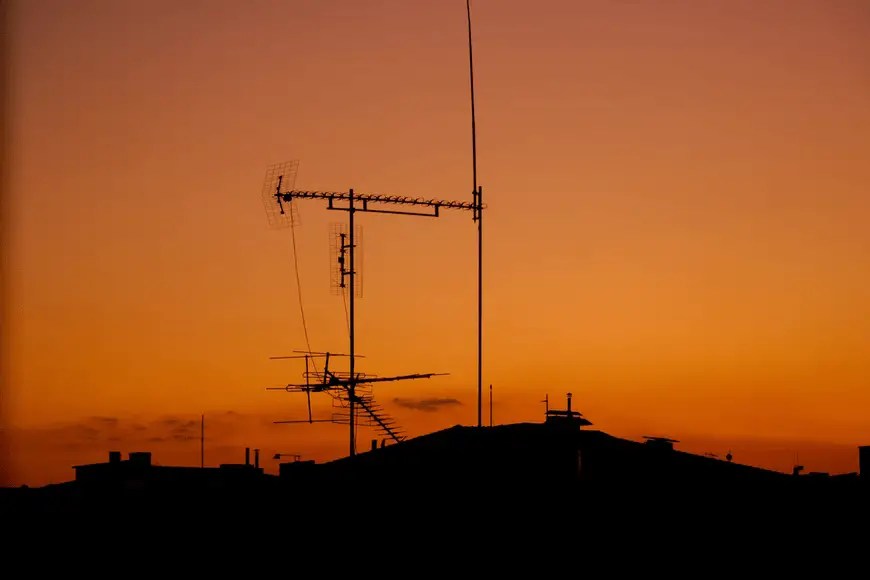Knowing what direction to point your antenna can mean the difference between clear TV signals and frequent interruptions as you’re watching your best show. Generally, you want to ensure that the front of the antenna faces the broadcast towers you are targeting.
Although there are ways to boost your TV antenna signal, you don’t want to have to always correct the interference issues. One of the cleverest ways to make sure that you always get a clear signal is to point your antenna in the right direction.
In this article, we’re going to look at how to properly position your TV antenna so that you can always get the strongest signals there are. Some things you should consider are where your home is located and the broadcast towers near you.
A Guide on How to Properly Point your TV Antenna
Here are some steps that will allow you to get the best signals by properly pointing your antenna.
1. Understand Your Antenna
First and foremost, let’s first understand what the front part of your antenna is because this is the part that you should properly position.
So, which part is the front?
Understanding this will allow you to aim your antenna properly. This is especially true when you’re dealing with outdoor antennas.
If you’re dealing with unidirectional TV antennas, it is easier to tell where the front is located. The part that has the small UHF dipoles is the front.
On the other hand, it can be a little difficult to determine the front when dealing with a multidirectional TV antenna. When you look at a multidirectional antenna, the part with the X-shaped elements is the front.
2. Locate the Broadcast Towers
You want to determine the best direction that will allow you to get the most free channels. Although you may be using Roku devices to stream more channels, you still want to get the TV channels you want from your antenna.
The broadcast towers around your home determine the number of channels you get. So, how do you find these broadcast towers?
If broadcast towers are located within 15 miles of your home, it will be easier to locate them. However, if they are further from your home, you may need to do some research. This may include looking at how your neighbors have positioned their antennas.
However, ensure that you also do your own research. You know what they say about following the herd. Feel free to check online, as there are websites that offer these resources easily.
Once you’ve known what direction you’re working with, you’ll be able to properly position your TV antenna.
3. Position Your Antenna
The optimum height for positioning your antenna is often about 10-20 feet for outdoor antennas. However, this isn’t standard because the best height is whereby your antenna is taller than the tallest obstacle in the line of sight.
The line of sight is the line in which the signals will travel from the transmission towers to your antenna. If the signals meet an obstacle such as trees, walls, or even roofs, they will bounce.
The more the signals bounce before they get to your antenna, the weaker the signal will be. Therefore, feel free to use the tallest mast you can find if you need to. This will allow you to get strong signals.
4. Work with Somebody
It’s easier to direct and position your antenna in the best position if you’re working with somebody. Why? Because you may think that you’ve directed the antenna in the right direction only to go down and find that your favorite channel isn’t working.
Therefore, to avoid this, consider working with a partner who can report the quality of reception with every change you make to your TV antenna up there.
You can FaceTime with them so that you’re always informed. If you can’t do all this, you can always hire a contractor to help install your TV antenna.
Ensure that the antenna mast is perfectly vertical to avoid unnecessary interference.
Now that we’ve understood how to point your TV antenna let’s look at how the cable can affect your reception.
5. Use A High-Quality Antenna Cable
Although this isn’t strictly a point on how to direct your antenna, it plays a role in your signal quality. Therefore, we thought we’d include it.
This is because you can properly direct your antenna with a clear line of sight and still not get your desired results.
The lower the quality of your TV antenna cable, the more interference you’ll get. This is especially true if your signal is already weak when it reaches the antenna. This could be because of obstacles such as hills, buildings, and more.
Therefore, if you can invest in a good cable, the better. You can think of this as an investment.
Conclusion
Find out the direction of the nearest broadcast towers and point your antenna towards it. Remember to face the front of the antenna towards the broadcast station.




